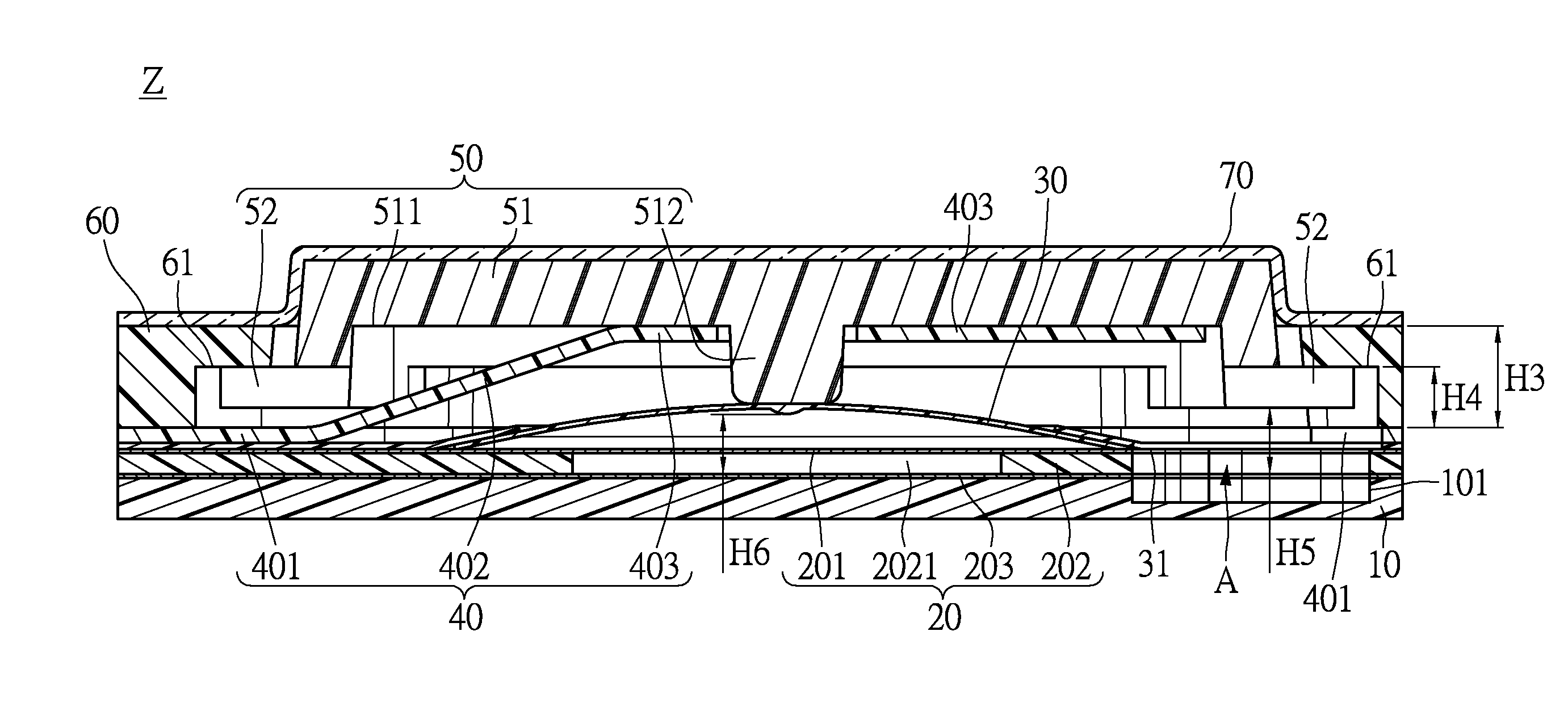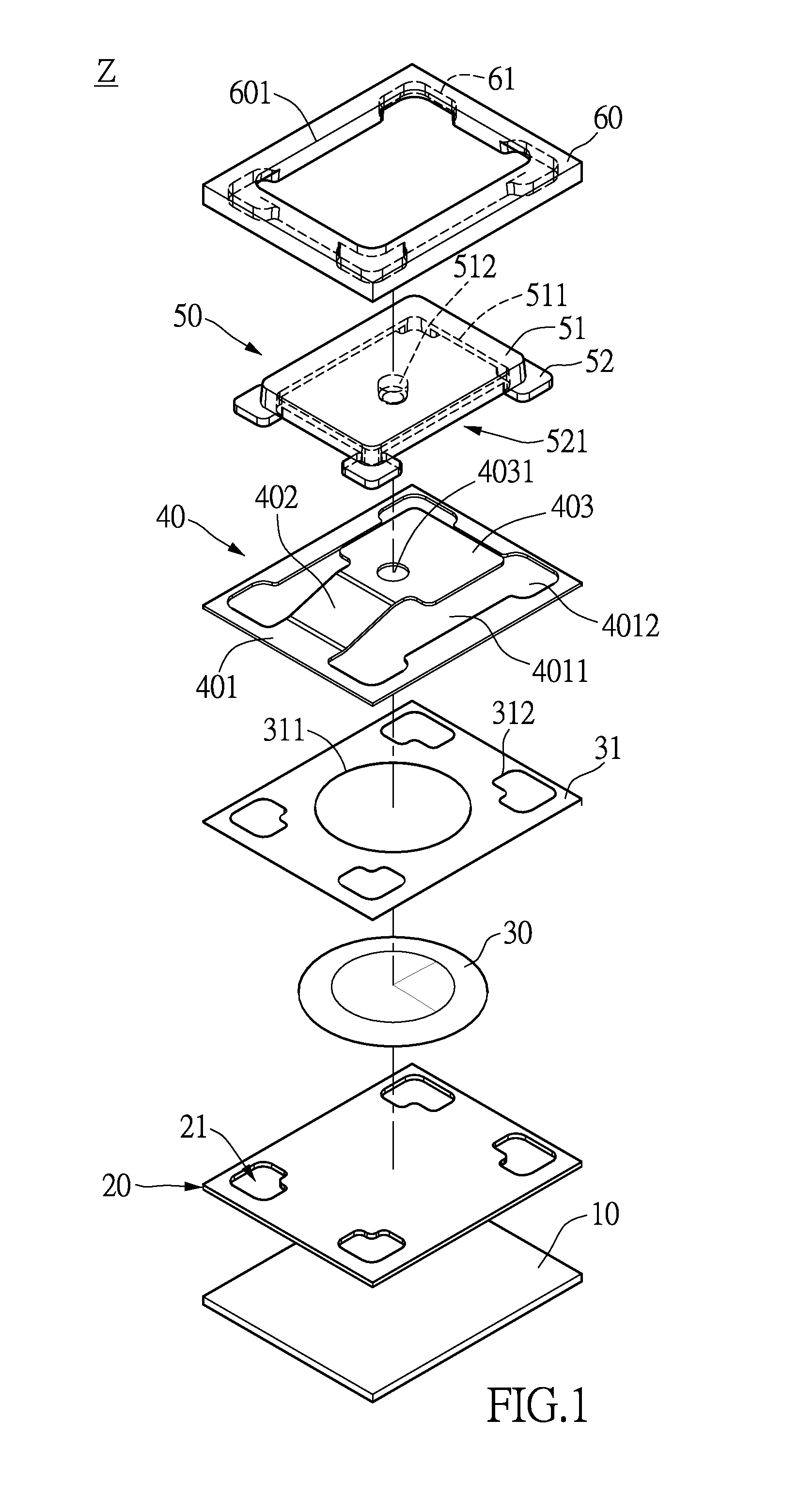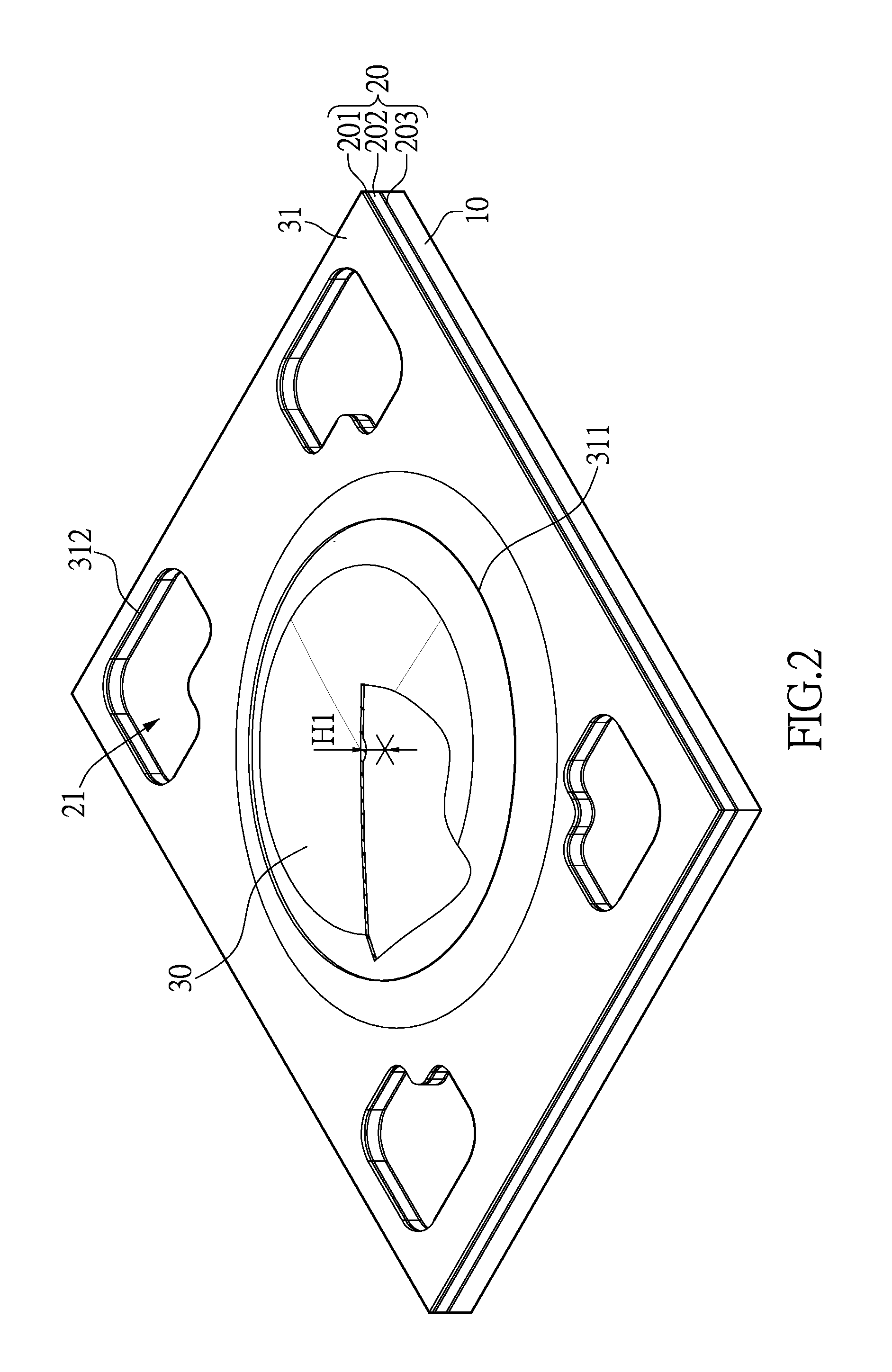Thin push button structure
- Summary
- Abstract
- Description
- Claims
- Application Information
AI Technical Summary
Benefits of technology
Problems solved by technology
Method used
Image
Examples
first embodiment
[0033]Please refer to FIGS. 1 to 9. FIG. 1 is an exploded view of a thin push button structure in accordance with the instant disclosure. FIGS. 2 to 8 are diagrams showing elements of the thin push button structure. FIG. 9 is a diagram showing the thin push button structure. As shown in FIG. 1, the thin push button structure includes a main board 10, a circuit board 20, an elastic element (a movable contact) 30, a supporting plate 40, a key top 50 and a frame 60. The circuit board 20, elastic element 30, supporting plate 40, key top 50 and frame 60 are disposed in succession on the main board 10. Preferably, the main board 10 is made of aluminum. The circuit board 20 may be a circuit membrane, flexible printed circuit (FPC) or flexible flat cable (FFC). The elastic element 30 may be a metal dome. The supporting plate 40 may be made of hard yet deformable membrane. The supporting plate 40 may be made of, for example, polycarbonate (PC), polyethylene terephthalate (PET), thermoplastic...
second embodiment
[0039]Please refer to FIGS. 10 to 12, which show the movement when a user presses the central region of the thin push button structure Z. FIG. 10 shows a cross-sectional view before the key top 50 is pressed. In the instant embodiment, the circuit board 20 has three layers including the top layer, a first conductive layer 201, a spacer 202 and the last layer, a second conductive layer 203. The first and second conductive layers 201, 203 have opposite electrode polarities. The spacer 202 is formed with a conduction hole 2021 at its central region. The dome of the elastic element 30 is positioned to the conduction hole 2021 of the spacer 202, and the stem 512 of the main body 51 aims at the dome of the elastic element 30. After the main body 51 covers the contacting portion 403 of the supporting plate 40, the stem 512 of the main body 51 contacts the dome apex of the elastic element 30.
[0040]As shown in FIG. 10, the distance H3 from the contacting portion 403 to the seat 401 is longer...
third embodiment
[0042]FIGS. 13 to 16 show the movement when the key top 50 is pressed at the peripheral region. When a user presses a corner of the key top 50, the post 52 of the opposite corner (for example, the diagonal corner) is brought up and abuts the alignment groove 61 of the frame 60. As a result, the post 52, which abuts the alignment groove 61, becomes a fulcrum. The key top 50 pivots by taking the vary post 52 as a fulcrum. Then the tilted key top 50 abuts the elastic element 30 through the stem 512. Subsequently the first and second conductive layers 201, 203 of the circuit board 20 are electrically conducted, and the signal is generated.
PUM
 Login to View More
Login to View More Abstract
Description
Claims
Application Information
 Login to View More
Login to View More - R&D
- Intellectual Property
- Life Sciences
- Materials
- Tech Scout
- Unparalleled Data Quality
- Higher Quality Content
- 60% Fewer Hallucinations
Browse by: Latest US Patents, China's latest patents, Technical Efficacy Thesaurus, Application Domain, Technology Topic, Popular Technical Reports.
© 2025 PatSnap. All rights reserved.Legal|Privacy policy|Modern Slavery Act Transparency Statement|Sitemap|About US| Contact US: help@patsnap.com



